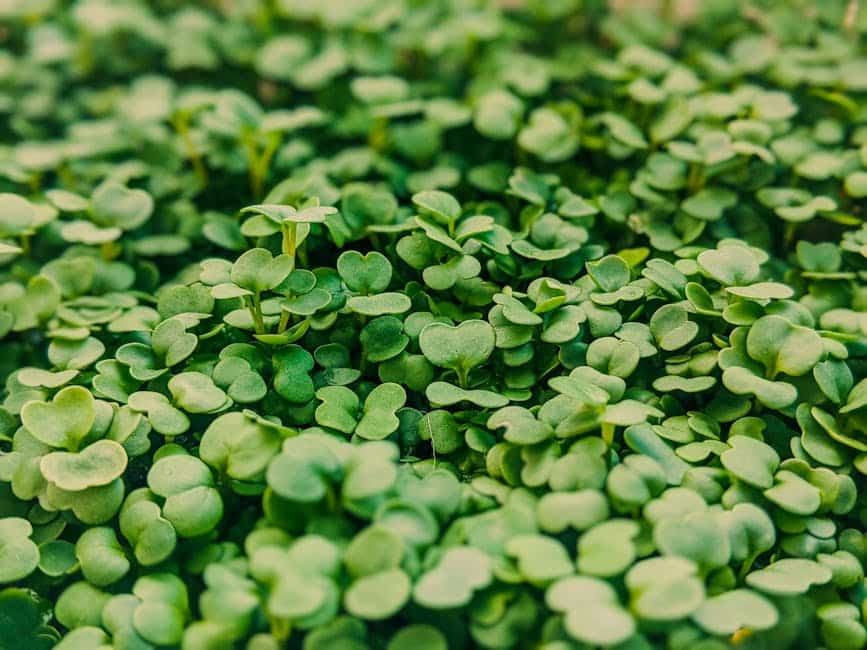Can microgreens be grown outside?
Yes, microgreens can indeed be grown outside, allowing you to enjoy the benefits of these nutritious and flavorful greens right in your own backyard. While many people associate microgreens with indoor gardening, growing them outdoors can be a viable option with the right conditions and care. In this article, we will explore the possibilities and considerations for growing microgreens outside.
Tips for Growing Microgreens Outside
Growing microgreens outdoors can be a rewarding experience, but it’s important to pay attention to the weather and growing conditions, as microgreens are sensitive to temperature and light. Here are some tips to help you successfully grow microgreens outside:
- Choose a suitable location: Select a location that receives at least six hours of sunlight per day, as microgreens thrive in bright light. However, it’s also beneficial to have some shade available, especially during the hottest part of the day.
- Regulate temperature: Microgreens prefer temperatures between 73-75 degrees Fahrenheit. To protect them from extreme heat, cold, or wind, consider using a greenhouse or shade cloth.
- Ensure good drainage: Proper drainage is crucial for microgreens to prevent fungal growth. If your soil does not drain well naturally, you can improve it by adding organic matter or using raised garden beds or trays.
- Choose appropriate seeds: Different microgreen varieties have different temperature and climate preferences. Select seeds that are suitable for your specific climate to ensure optimal growth.
- Watering: Microgreens need consistent moisture, so watering regularly is important. Planting near a source of fresh water can make watering easier.
- Monitor for pests and weeds: Growing microgreens outside exposes them to pests and weeds. Keep a close eye on your plants and take necessary measures to control pests and remove weeds.
Considerations for Growing Microgreens Outside
While there are numerous benefits to growing microgreens outside, there are also some downsides to keep in mind:
- Lack of control: Unlike indoor growing, you have less control over the growing conditions when growing microgreens outside. Factors such as temperature, humidity, and sunlight can vary, which may affect the growth and quality of your microgreens.
- Pests and weeds: Outdoor growing exposes microgreens to a wider range of pests and weeds. It’s essential to implement pest management strategies and regularly inspect your plants to ensure they stay healthy.
- Longer grow cycles: Microgreens grown outside generally have longer grow cycles compared to indoor growing. This means you may need to wait a bit longer before harvesting your microgreens.
Despite these considerations, many people find success and enjoyment in growing microgreens outside. With proper care and attention, you can have a bountiful harvest of fresh and nutritious microgreens right from your garden.
Conclusion
In conclusion, microgreens can be successfully grown outdoors, provided you take into account the specific needs of these delicate greens. By selecting a suitable location, regulating temperature and light, ensuring good drainage, and monitoring for pests and weeds, you can enjoy the benefits of growing microgreens outside. While there are some downsides to consider, such as a lack of control over growing conditions and longer grow cycles, the rewards of growing your own microgreens in your backyard make it a worthwhile endeavor.
Related Websites:
FAQs:
Q: What are microgreens?
Microgreens are young vegetable greens that are harvested just after sprouting and before they grow into baby plants. They are known for their rich flavors, vibrant colors, and high nutritional value.
Q: Can microgreens be grown outside?
Yes, microgreens can be grown outdoors. However, there are certain factors to consider such as climate, sunlight, and weather conditions. Outdoor microgreen cultivation offers benefits like increased space and natural sunlight, but it also comes with potential risks and limitations.
Q: What are the benefits of growing microgreens indoors?
Growing microgreens indoors provides several benefits. Firstly, it allows you to control the growing environment, ensuring optimal conditions for growth. Secondly, indoor cultivation eliminates the risk of outdoor pests and diseases. Lastly, it allows for year-round cultivation regardless of the outdoor climate.
Q: What factors should I consider before growing microgreens outdoors?
Before growing microgreens outdoors, consider the climate and temperature requirements. Microgreens thrive in moderate temperatures, so it’s important to choose a suitable season. Additionally, consider the location and ensure proper sunlight exposure, protection from strong winds, and well-drained soil.
Q: What are the common pests and diseases affecting outdoor microgreens?
Common pests that can affect outdoor microgreens include aphids, caterpillars, and slugs. Diseases like damping-off and fungal infections can also occur. To prevent and control these issues, practice proper sanitation, maintain good airflow, and use organic pest control methods when necessary.






